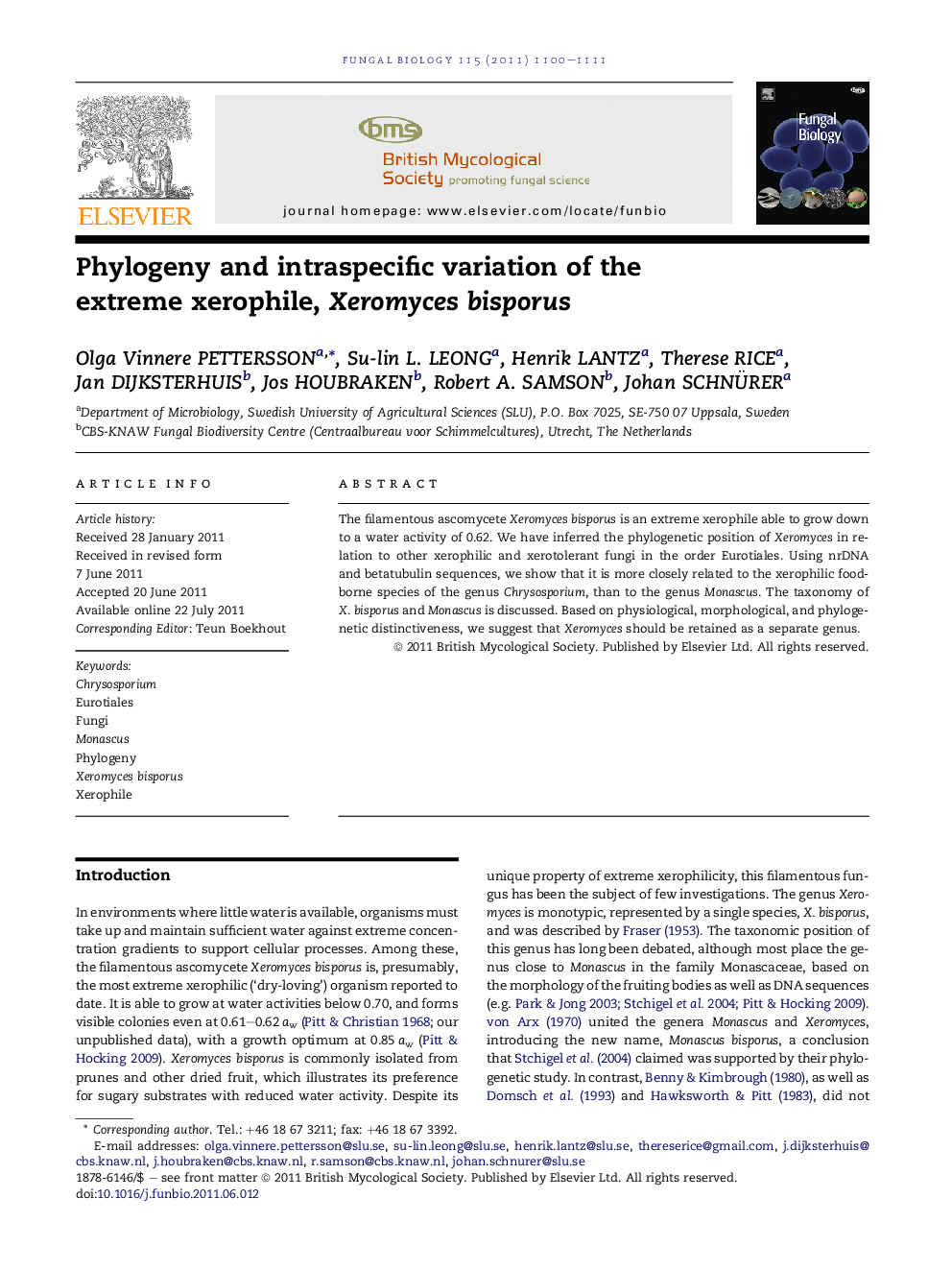| Article ID | Journal | Published Year | Pages | File Type |
|---|---|---|---|---|
| 4357150 | Fungal Biology | 2011 | 12 Pages |
The filamentous ascomycete Xeromyces bisporus is an extreme xerophile able to grow down to a water activity of 0.62. We have inferred the phylogenetic position of Xeromyces in relation to other xerophilic and xerotolerant fungi in the order Eurotiales. Using nrDNA and betatubulin sequences, we show that it is more closely related to the xerophilic foodborne species of the genus Chrysosporium, than to the genus Monascus. The taxonomy of X. bisporus and Monascus is discussed. Based on physiological, morphological, and phylogenetic distinctiveness, we suggest that Xeromyces should be retained as a separate genus.
► Xeromyces is not synonymous to Monascus; it should be retained as separate genus. ► Food borne xerophilic Chrysosporium are the closest relatives of Xeromyces. ► Genetic and physiological variation in worldwide population of X. bisporus is low. ► The minimal aw for X. bisporus growth is experimentally confirmed to be 0.61. ► Some strains of X. bisporus can grow at 0.98 aw.
